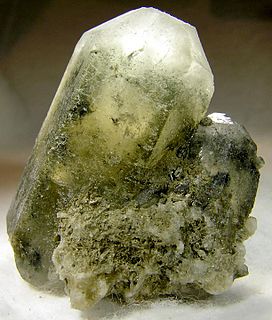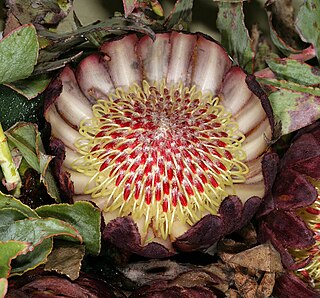Bogon is a village in Kale Township, Kale District, in the Sagaing Region of western Burma. [1]
Bogon is a village in Kale Township, Kale District, in the Sagaing Region of western Burma. [1]

Chin State is a state in western Myanmar. The 36,019-square-kilometre (13,907 sq mi) Chin State is bordered by Sagaing Division and Magway Division to the east, Rakhine State to the south, Bangladesh to the south-west, and the Indian states of Mizoram to the west and Manipur to the north. The population of Chin state is about 478,801 in 2014 census. The capital of the state is Hakha. The state is a mountainous region with few transportation links. Chin State is sparsely populated and remains one of the least developed areas of the country. Chin State has the highest poverty rate of 73% as per the released figures from the first official survey. The official radio broadcasting dialect of Chin is Falam. There are 53 different subtribes and languages in Chin State. There are nine townships in Chin State: Hakha, Thantlang, Falam, Tedim, Tonzang, Matupi, Mindat, Kanpetlet and Paletwa townships. In 1896, Mindat and Kanpetlet were placed under Pakokku Hill Tracts District of British Burma later emerged into Chin hills. Only Paletwa township became a part of Arakan Hill Tracts District of British Burma.

Albite is a plagioclase feldspar mineral. It is the sodium endmember of the plagioclase solid solution series. It represents a plagioclase with less than 10% anorthite content. The pure albite endmember has the formula NaAlSi
3O
8. It is a tectosilicate. Its color is usually pure white, hence its name from Latin, albus. It is a common constituent in felsic rocks.

Mindat.org is a non-commercial online database, claiming to be the largest mineral database and mineralogical reference website on the Internet. It is used by professional mineralogists, geologists, and amateur mineral collectors alike.

Pakokku is the largest city in the Magway Region of Myanmar. It is situated about 30 km north-east of Bagan on the Irrawaddy River. It is the administration seat of Pakokku Township, Pakokku District and Gangaw District. Pakokku Bridge is part of the India–Myanmar–Thailand Trilateral Highway and is the longest bridge in Myanmar. It is home of the Pakokku Airport.

A native metal is any metal that is found pure in its metallic form in nature. Metals that can be found as native deposits singly or in alloys include aluminium, antimony, arsenic, bismuth, cadmium, chromium, cobalt, indium, iron, manganese, molybdenum, nickel, niobium, rhenium, selenium, tantalum, tellurium, tin, titanium, tungsten, vanadium, and zinc, as well as the gold group and the platinum group. Among the alloys found in native state have been brass, bronze, pewter, German silver, osmiridium, electrum, white gold, silver-mercury amalgam, and gold-mercury amalgam.

Vera Mindy Chokalingam, known professionally as Mindy Kaling, is an American actress, comedian, writer, producer, and director. She first gained recognition starring as Kelly Kapoor in the NBC sitcom The Office (2005–2013), for which she also served as a writer, executive producer, and director. For her work on the series, she was nominated for a Primetime Emmy Award for Outstanding Writing in a Comedy Series and five times for Outstanding Comedy Series.

Falam District is a district of the Chin State in Myanmar. It consists of 3 townships and 445 villages. The major towns include: Chikha (Gyikhar), Tonzang (Htonzan), Tiddim, Fort White, and Falam.
Malioma is a village in the Manni Department of Gnagna Province in eastern Burkina Faso. The village has a population of 378. The climate of the village is a 'semi-arid steppe'.
Ganorhynchus is an extinct genus of prehistoric lungfish from the Devonian period. It is only found in Mansfield, Pennsylvania.
Faizievite is a very rare mineral with the formula K2Na(Ca6Na)Ti4Li6Si24O66F2. This triclinic mineral is chemically related to baratovite and katayamalite. Faizievite is a single-locality mineral, coming from the moraine of the Darai-Pioz glacier, Tien Shan Mountains, Tajikistan. Alkaline rocks of this site are famous for containing numerous rare minerals, often enriched in boron, caesium, lithium, titanium, rare earth elements, barium, and others.
The borate fluorides or fluoroborates are compounds containing borate or complex borate ions along with fluoride ions that form salts with cations such as metals. They are in the broader category of mixed anion compounds. They are not to be confused with tetrafluoroborates (BF4) or the fluorooxoborates which have fluorine bonded to boron.
The borate carbonates are mixed anion compounds containing both borate and carbonate ions. Compared to mixed anion compounds containing halides, these are quite rare. They are hard to make, requiring higher temperatures, which are likely to decompose carbonate to carbon dioxide. The reason for the difficulty of formation is that when entering a crystal lattice, the anions have to be correctly located, and correctly oriented. They are also known as borocarbonates. Although these compounds have been termed carboborate, that word also refers to the C=B=C5− anion, or CB11H12− anion. This last anion should be called 1-carba-closo-dodecaborate or monocarba-closo-dodecaborate.
The sulfate chlorides are double salts containing both sulfate (SO42–) and chloride (Cl–) anions. They are distinct from the chlorosulfates, which have a chlorine atom attached to the sulfur as the ClSO3− anion.

The sulfate carbonates are a compound carbonates, or mixed anion compounds that contain sulfate and carbonate ions. Sulfate carbonate minerals are in the 7.DG and 5.BF Nickel-Strunz groupings.
Borate sulfates are mixed anion compounds containing separate borate and sulfate anions. They are distinct from the borosulfates where the borate is linked to a sulfate via a common oxygen atom.
The borate chlorides are chemical compounds that contain both borate ions and chloride ions. They are mixed anion compounds. Many of them are minerals. Those minerals that crystallise with water (hydrates) may be found in evaporite deposits formed when mineral water has dried out.

Leucadendron conicum, the garden route conebush, is a flower-bearing shrub that belongs to the genus Leucadendron and part of the fynbos form. The plant is native to the Western Cape and the Eastern Cape, where it occurs in the Langeberg, Outeniqua Mountains, Tsitsikamma Mountains, Elandsberg and Garden Route plain.The shrub grows to be 6 m and bears flowers from October to November.

Protea amplexicaulis, the clasping-leaf sugarbush, is a flower-bearing shrub that belongs to the genus Protea. The plant is endemic to South Africa and occurs from Citrusdal to the Kogelberg, as well as in the Langeberg. The shrub remains low and spreads out, becoming 1.3 m in diameter and flowering from June to September.
Calcarichelys is an extinct genus of protostegid turtle from the Late Cretaceous of the Selma Formation in Alabama, and possibly from Angola. It contains only one species, C. gemma.